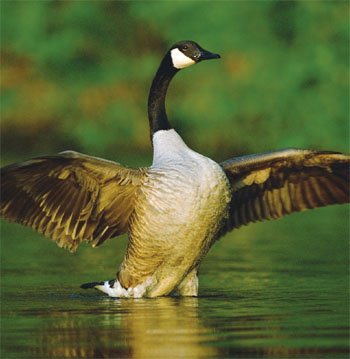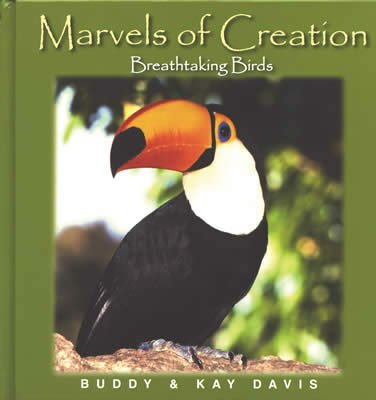Canada Goose
Seeing the famous “V” formation of the Canada goose is always a blessing to anyone who loves and appreciates nature.

Seeing the famous “V” formation of the Canada goose is always a blessing to anyone who loves and appreciates nature. Contrary to popular belief, it is not usually the wise old gander that leads the flock but his mate. Leadership of the “V” formation changes from time to time as the lead bird tires. This unique flight pattern restricts drag because of turbulence created by the goose flying ahead. They are capable of obtaining flying speeds of 50–60 miles (80–96 km) per hour and sometimes fly one mile (1.6 km) high. When they take off from the water, they usually run for several steps on the surface flapping their powerful wings to become airborne. Canada geese are also called “honkers” because of their loud vocal call.
The Canada goose is easily recognized by its black head, long neck, and white chin marking that protrudes in back of the eyes. The upper body is a graybrown while the breast and belly are pale to dark. The tail is black with white underparts. It has a dark gray beak and the legs and webbed feet are the same color.
Canada geese are intelligent and soon learn how to stay clear of danger. However, they can be decoyed and called in by waiting hunters. The meat is delicious and served on many a table during the goose season.
The Canada goose can be found abundantly in Canada and the United States and its range is extending. Pairs mate for life but if one dies, the other mate usually seeks out a partner the following season.
The nest is usually made on the ground near water but they will build on muskrat huts, beaver dams, rocks, and abandoned osprey nests as well. The female lays six to seven eggs and incubates them for 25 to 30 days. Upon hatching, parents immediately lead the goslings to water. Day-old babies can swim up to 40 feet (12.2 m) underwater while feeding or to escape danger.
The young will migrate with their parents in the fall and stay with them in their winter grounds. The family then migrates north in the spring and the yearlings separate at the breeding grounds. Some geese do not migrate.
Canada geese feed mainly in the morning and early evening. They are grazing birds and feed on a variety of grasses and crops. On water, they feed on surface plants but enjoy insects, crustaceans, mollusks, and snails as well.
Canada Goose
Anseriformes • Anatidae
Branta canadensis
Length: 25–45 inches (64–114 cm)
Weight: 9–14 pounds (4–6 kg)
Life Span: 20–30 years
Special Design Feature: Canada geese fly in a
“V” formation, which reduces drag as the flock
flies.
Did You Know? Canada geese mate for life and
the goslings will stay with the parents for a year,
even migrating with them.
Marvels of Creation: Breathtaking Birds
This spectacular book brings the world of feathered creatures alive in a unique and colorful way.
Browse Kids Book- © 2024 Answers in Genesis
- Privacy Policy
- Contact
- About

